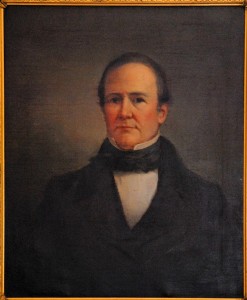Editor’s note: This annual assembly on school history is informally known as the “Button Speech,” a reference to founders Samuel and Emily Williston and their manufacturing business (although buttons themselves are not usually the focus). This year, Williston Archivist Rick Teller ’70 spoke during Upper School assembly on September 23. 2015. For the first time, the annual speech also included archival photos, included here.
Good morning. To begin, I’d like you to chew on a few words by the American poet Walt Whitman. No, Walt didn’t go to Williston. As a matter of fact, in the 1850s, when he wrote this, Williston students didn’t study English. (Things change.) Mr. Whitman wrote,
I know that the past was great and the future will be great,
And I know that both curiously conjoint in the present time . . .
And that where I am, or you are, this present day, there is the center of all days.

Let’s talk about the early history of the school. As you probably know, what was once called Williston Seminary was founded in 1841 by Easthampton native Samuel Williston, who earned a lot of money making buttons and elastic. But while our hearts yearn for him (for his campus and his geriatric elm), Mr. Williston is going to lurk in the background this morning. There will be other occasions, like Founders’ Day, to get to know him better. And you can always come talk with me.
In the beginning, a Williston Seminary student would have enrolled in one of two divisions. There was a Classical Department, which provided the traditional grounding in Greek and Latin, that would prepare students for university and, perhaps, the ministry. More innovative, and closest to Mr. Williston’s heart was the Scientific Department, in which students who did not plan to go to college could get a thorough education in engineering, mathematics, surveying — everything needed to enter the professions necessary to build a young nation’s growing industrial base. This was an innovative notion in 1841.

